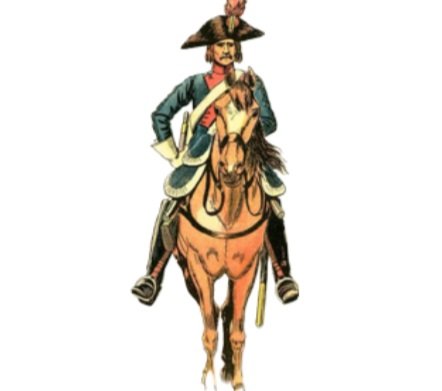The Politics of Knitting: From the French Revolution to Bernie Sanders
Lina Weber
4. Feb. 2021
Needlework is commonly considered to be apolitical. A nice hobby for ‘grandmas’ and ‘housewives’, knitting, crocheting, sewing are often associated with domesticity, Weltabkehr (a withdrawal from the world and retreat into the self), old-fashioned jumpers, and itchy socks. There is, however, a political side to crafting. In January, a photo of Bernie Sanders at Joe Biden’s inauguration went viral. The seventy-nine-year-old senator from Vermont sits on a chair, his arms and legs crossed. He wears a mask, a winter coat – and mittens. With its causal calmness, corona-conform distancing, and nonchalance, the picture has been repurposed for hundreds of memes. The mittens received particular attention. #BerniesMittens quickly became a trending hashtag of the inauguration and their maker, a primary teacher from Vermont, received countless requests of interested buyers. She gave the mittens, which she created from repurposed wool sweaters and fleece from recycled plastic bottles, to Sanders years ago. On Ravelry, an online networking service for fibre arts with about nine million registered users, designers quickly provided patterns for ‘Bernie’s mittens’, followed by adjusted patterns for ‘Bernie hats’ and ‘Bernie jumpers’. Most of these patterns are free, designers ask makers to donate money to charity. Even The Guardian featured a tutorial about how to stitch your own hand warmers that will make you ‘feel the Bern’. One maker sold a crochet doll of Sanders wearing the mittens in an auction for over $40,000 and gave the profits to charity. Sanders himself had his photo printed on shirts, raising over $1,8 million for charities in Vermont.
The last US presidential inauguration, too, gave rise to a great upsurge in crafting. Reacting to Donald Trump’s misogynism, the ‘Pussyhat project’ offered free patterns to knit, crochet, or sew pink hats with cat ears. Thousands of such hats were seen on the Women’s Marches that took place in the US and other places around the world. Like Bernie mittens, pussyhats make a statement. By wearing them, people visibly identify with a group and express their support for a common goal. That these symbols are handmade forces us to rethink the political implications of crafting.
The crafting community, like society at large, is struggling with questions of accessibility, inclusivity, diversity, and cultural appropriation. Yet, the act of making clothes yourself has emancipating qualities. Instead of having to rely on ready-made clothes from anonymous companies, you pick a pattern yourself. You adjust the fit to your own body, and you combine colours and fibres of your own choosing. The hours, energy, and craftsmanship going into sewing, knitting, or crocheting a garment will make you appreciate it more and wear it longer. Neither time- or cost-effective, crafting defies the imperatives of capitalism and its adjunct throw-away culture.
Needlework has a long history. Early surviving pieces of knitted fabric were found in the Egyptian pyramids, most extant early exampled come from the Middle-East. Crafting plays an important role in Christianity. There are several images of the Virgin Mary knitting. In monasteries, monks engaged in manual labour, which included weaving and sewing, to contemplatively connect with God and to gain economic independence from the outside world. For sailors and fishers, knitted jumpers were a means to brace the hardship of the sea, to keep warm and dry, and to be identifiable if washed ashore after a shipwreck. Historically, needlework was done by women as well as men. Soldiers and shepherds kept themselves productively occupied with knitting in the waiting periods of their jobs, medieval guilds in France and Germany trained highly-qualified craftsmen.
The political power of knitted garments that can be seen at the last two presidential inaugurations is not new either. Let us take the example of the French Revolution. The Phrygian cap, a red-coloured bonnet, became a popular symbol of freedom and the pursuit of liberty. By wearing it, revolutionaries were easily identifiable and expressed their allegiance to the common cause. These caps were made by women, the tricoteuses, who allegedly watched the public executions in Paris – while knitting.
Gandhi spinning
Cerdit: Wikimedia Commons
For Mahatma Gandhi, hand spinning was an important means to emancipate India. Boycotting British goods and rejecting European garments, he argued that handmade traditional clothes would provide economic stability for India’s rural areas. Earlier versions of the Indian flag featured a Charkha, a wheel for hand spinning. Other examples can be found in the late-nineteenth and early-twenty century Arts and Craft movement, which often aligned with socialists. And in the ongoing protests in Belarus against the Belarusian government and President Alexander Lukashenko. A protester was knitting a piece of fabric in the colours of the old Belarusian flag in public, the artist Rufina Bazlova embroiders the protest. You could also think of recent yarn bombings, where craftivists wrapped public spaces in wool, or visible mending, a technique to repair damaged garments in contrasting colours.
Crafting is thus more than a hobby for women. The distinction between ‘domestic’/’apolitic’ and ‘public’/’political’ is not as clear-cut as is often assumed. Creative needleworking, whether done at home or in public places, can be an act of emancipation. Especially in a twenty-first-century world of social media, handmade clothes are powerful symbols that express political ideas, create communities, and visibly identify their wearers with a common cause.
Dr Lina Weber is a Postdoctoral Fellow at the University of St Andrews where she works as part of the Leverhulme-funded After The Enlightenment Project with a focus on Dugald Stewart and political economy.





